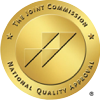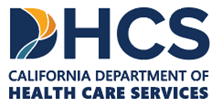Is Meth An Epidemic In The Gay Community?
- Home
- Blog
- Uncategorized
- Is Meth An Epidemic In The Gay Community?

By Patrick O’Neil (RADT, MFA), Group Facilitator, Cast Treatment Centers
Over the last fifteen years, crystal meth has become one of the most dominant and destructive drugs in the gay community. Meth’s popularity began in the dance clubs and circuit parties of the 1990s — where drug use was already an accepted part of that culture. Cocaine and ecstasy were both readily available, and when meth arrived it became just another party drug. Segue to 2009, when the dating app Grindr burst on the scene and meth use by gay men soared even higher. Phil McCabe, a social worker and president of the National Association of LGBT Addiction Professionals explains the reason behind this phenomenon, “Today with Grindr, men can have sex and drugs delivered to their door instantly. I think it’s gotten worse in the past couple of years.”
What makes meth so popular is the euphoric effect it has on the brain by introducing larger than normal quantities of dopamine — the naturally occurring chemical that the brain produced in response to pleasure — which in turn can also increase the user’s desire to have sex. According to Cast Center’s Clinical Program Director Mike Rizzo, “With crystal meth, it’s sort of the perfect gay drug. It lowers sexual inhibitions, increases arousal and helps users escape internalized homophobia or other social stigmas.”
In their study, “Crystal Methamphetamine And Sexual Sociality In An Urban Gay Subculture: An Elective Affinity,” Dr. Perry Halkitis and Associate Professor Andrew Green’s research confirm Rizzo’s assessment, “Methamphetamine is associated with increased self-esteem, increased libido, greater sexual endurance, diminished sexual inhibition, and a higher threshold for pain, the drug is used strategically by gay and bisexual men to negotiate sexual sociality and increase sexual pleasure.”
Statistically gay men are four times more likely to try meth than straight men. Reporter Matt Blois explains that, “It’s a reality born from a drug that heightens the libido, but also helps many gay men care less about how society treats and judges them.” As Michael Arndt, a Sober Companion for CAST Treatment Centers states, “Crystal meth touches on two things the gay culture struggles with — vanity and sex. We feel intense pressure to be thin or fit, and an emphasis of sex is a major emphasis in our culture. There is this unspoken, and unfortunately mainstream, message that if you are gay and want to be a part of the culture, you have to be hot and have plenty of sex.”
In his handout “The Perfect Storm: Gay Men, Crystal Meth and Sex,” written for The Association of LGBT Addiction Professionals, author Craig Sloane further defines this issue, “Sex itself often becomes a trigger for meth use. Sex can become a barrier to treatment and lead to relapse. When under the influence of meth, the sexual pleasure is so intense that many addicts fear they will never experience the same level of sexual pleasure sober.” While Dr. Steven Lee, a psychiatrist who specializes in crystal meth addiction, states, “Once a crystal [meth] user, whether homosexual or heterosexual, begins to have regular sex with crystal, this becomes an extremely difficult behavior to stop. Sex while high on crystal is incomparable to ‘sober sex.’ The sex drive becomes so strong that some people have continuous sex lasting several hours to days.”
According to the Centers for Disease Control and Prevention (CDC), for some gay and bisexual men, alcohol and illegal drug use, especially methamphetamine, contributes to a higher chance of getting HIV and other STDs — creating another set of problems for the gay community. In one study conducted in San Francisco, gay men who visited a health clinic were twice as likely to be infected with the AIDS virus if they had recently used [meth]. And they were nearly five times as likely to be diagnosed with syphilis.
Yet even with those disturbing odds meth use in the gay community continues to rise and the CDC reasons that “Alcohol and drug use among some gay and bisexual men can be a reaction to homophobia, discrimination, or violence they experienced due to their sexual orientation and can contribute to other mental health and physical problems.” This internalized reaction can also make it difficult for the meth addict to not only stop using but to seek help and enter treatment.
“It’s such a tough problem. There’s such a high rate of recidivism; you don’t get much success,” said Mark Ketcham, Executive Director for Sun Serve, a life assistance and professional mental health provider for the LGBTQ community in South Florida. “If you know you’re not going to win, it’s hard to take it on, but we have to start somewhere. We have to start addressing the whys. It’s an uphill battle, this damn thing. It’s just very frustrating.”
Ultimately it all comes down to the addict asking for the help they need. Fortunately, under the Affordable Care Act, health coverage is available to help meth addicts to enter meth addiction treatment and beginning their recovery.
References:
- Arndt, M. (n.d.). The False Intimacy of Crystal Meth. Retrieved from https://castcenters.com/blog/the-false-intimacy-of-meth/
- Blois, M. Meth A Special Challenge Among Gay Men. (2017). Retrieved from http://metheffect.com/GayMen-Addicts.html
- Crystal Methamphetamine Use, Internet And Other Factors Likely Fueling Increases In STDs, Risk Behavior Among Gay And Bisexual Men. (2005). Retrieved from https://www.cdc.gov/stdconference/2004/mediarelease/crystalmeth.htm
- Editorial Staff. (n.d.). 7 Shocking Facts About Meth in the Gay Community. Retrieved from https://drugabuse.com/7-shocking-facts-about-meth-in-the-gay-community/
- Gay Men and Meth: Everything You Need to Know. (2019). Retrieved from http://blog.lighthouse.lgbt/gay-men-meth-heres-need-know/
- Green, A., & Halkitis, P. Crystal Methamphetamine And Sexual Sociality In An Urban Gay Subculture: An Elective Affinity. (2006). Retrieved from https://www.ncbi.nlm.nih.gov/pubmed/16846941
- Lee, S. Crystal Methamphetamine. (2006). Retrieved from https://www.cyc-net.org/cyc-online/cycol-0406-lee.html
- Lourenco, D. (2018). Sex And Drugs: Popular Gay Dating App Allows Users To Find More Than A Date. Retrieved from https://www.nbcnews.com/feature/nbc-out/sex-drugs-popular-gay-dating-app-allows-users-find-more-n896081
- Rosenblatt, S. (2007). More Gay Men Using Meth, Study Finds. Retrieved from https://www.latimes.com/archives/la-xpm-2007-apr-11-me-meth11-story.html
- Sloane, C. (n.d.) The Perfect Storm: Gay Men, Crystal Meth and Sex [PDF file]. Retrieved from https://www.naadac.org/assets/2416/craig_sloane_-_naadac_handouts.pdf
- Substance Use Among Gay and Bisexual Men. (n.d.). Retrieved from https://www.cdc.gov/msmhealth/substance-abuse.htm
GET STARTED TODAY!
424-302-2598
CAST Treatment Centers is Proud to Celebrate Over 18 Years
Helping Individuals & Families
Programs
What We Treat
-
Substance Abuse
Insurance
Alumni
Contact Cast Treatment Centers
CAST Treatment Centers
630 N Doheny Drive
West Hollywood, CA 90069
424-302-2598
Email
Administration
632 N Doheny Drive
West Hollywood, CA 90069
424-302-2598
Email
Service Area
CAST Treatment Centers is licensed by the California State Department of Health Care Services. DHCS Certification for Intensive Outpatient and Outpatient Services.
License Number: 190936BP.
Expiration Date: 8/31/2025.
Copyright © 2022 CAST Treatment Centers. All rights reserved.
Privacy Policy | HIPAA | Terms of Use | Site Map


